This post has all the best paleo diet tips for beginners! If you are planning on trying the paleo diet be sure to read this information first. It will make the paleo diet so much easier for you.
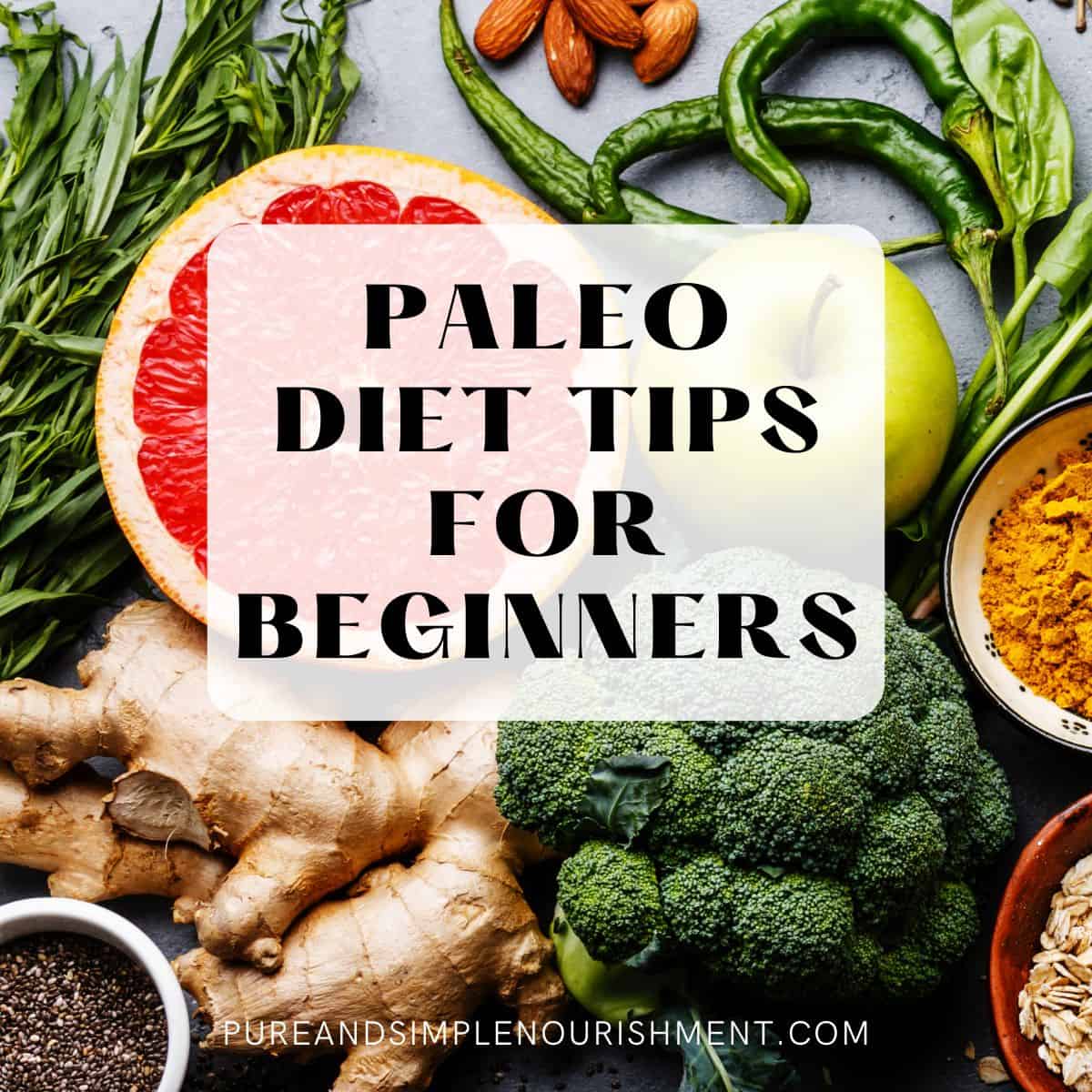
Disclaimer: some of the links in this post are affiliate links whereby I make a small commission if you purchase the product through that link. This does not cost you anything extra and helps me to keep this website running.
I followed a paleo diet for over 10 years to help my body heal from many different chronic health issues, and when I started the diet I found it very overwhelming because there were so few helpful resources out there. That is why I decided to make this guide. If you are thinking of trying the paleo diet I hope this post helps make your experience so much easier than mine was!
Table of Contents
What is the paleo diet?
Before we get to my paleo diet tips, I thought we should review what the paleo diet is.
The paleo diet, which is also known as the paleolithic diet, or the caveman diet, is a way of eating that tries to emulate the way our ancestors ate.
Unfortunately, our current food system has completely changed what we eat. Nutrient poor, processed food has become the norm, and we are suffering many ill health effects as a result. Processed food intake has been linked to increased rates of cancer, heart disease, type 2 diabetes and many other health conditions.
Many chronic health issues are on the rise and while I am not saying that what we eat explains all aspects of these health issues, but more and more evidence shows that diet does play a role in many of them.
The paleo diet encourages you to eat real, whole foods that are unprocessed including fruits, vegetables, meat, nuts, and seeds, and to avoid processed food and refined sugars.
I followed a strict paleo diet for over 10 years and this way of eating lead to many improvements in my own health including healing my acne, keratosis pilaris, chronic diarrhea and vomiting, heat rashes, and headaches, and it is because of my own experience that I have become so passionate about the idea that food can be a form of medicine.
The paleo diet has also been shown to be helpful for many different health conditions, including for weight loss, diabetes, and heart disease. There are also many anecdotal reports of it helping with chronic pain and digestive issues such as bloating, gas and constipation etc.
Personally I don't love the name "paleo diet" because this way of eating really isn't meant to be a diet. It's really about shifting your eating habits to focus on real, nourishing food, and is meant to be a lifestyle shift rather than a short term diet or fad. We all know that short term diets or fad diets don't work. They can be helpful in the short term but almost always lead to relapses and are usually not helpful in the long run.
If you are interested in trying the paleo diet for yourself, here I am sharing 18 tips to help get you started. This way of eating can be very challenging when you first start, and I found it quite difficult initially so I am hoping these tips will make things so much easier for you!
Now of course, before making any diet or lifestyle changes, always be sure to discuss it with your own doctor or health practitioners first. This is not to be taken as medical advice and this way of eating may not be ideal for everyone.
15 Paleo diet tips:
1. Do Your Homework
The paleo diet is not something you can just decide to start tomorrow. You can attempt to do it, but I know from experience that changing to the paleo diet requires a total lifestyle adjustment. If you don't do your homework ahead of time and gather the tools, recipes, food items, and resources you need it is highly unlikely that you will succeed. And I want you to succeed!
Now, there are many paleo resources out there that I found extremely helpful when I first changed my diet. I created a list of my favourite informational books and cookbooks for you so that you can easily prepare yourself ahead of time.
Paleo Information Books:
My Favourite Paleo Cookbooks:
- Against All Grain Meals Made Simple
- Lexi's Clean Kitchen
- Against all Grain Celebrations
- The Paleo Kids Cookbook
And if cookbooks aren't your thing, I've got hundreds of free paleo recipes on this site for you to enjoy. I've also got a whole post on my favourite paleo books that you will want to read.
To make your life easier I also created a free PDF with a list of foods that are allowed on the paleo diet. You can download it below:
2. Don't Count Calories
This may sound counter-intuitive, especially if your goal is weight loss. I know that many diets get you to stick to a low calorie count. But the paleo diet isn't like that. In fact, you don't need to count anything on the paleo diet. Not calories or macros (unlike the keto diet for example). Food is so much more than its calorie count and counting calories often leads to restrictive eating patterns, which for many people is not sustainable or healthy.
Changing the way you eat also means changing your relationship with food. Food is not the enemy. You need food to survive, and even to help heal and improve your health. In fact, some of the most nutrient dense food is also some of the most calorically dense food, so by restricting calories you ultimately end up restricting nutrients, which in the long run is not healthy. That's why you don't count calories on the paleo diet.
Another premise of the paleo diet is to listen to your body. Eat when you are hungry, and stop when you are full. Pay attention to your food and chew it thoroughly. As you start changing your relationship with food, and start eating nourishing, anti-inflammatory, whole foods, as well as healthy fats, you will naturally start to regulate how much you eat so counting calories becomes irrelevant.
As well, by increasing your intake of more nutrient dense and filling foods (including healthy fats) you will find that overtime your food cravings will start to disappear, you will stay fuller longer, and the tendencies to overeat and binge on unhealthy foods will disappear. This will also help you naturally lose weight (if you need to) overtime, all without counting a single calorie!
3. Eat What Works For You
I cannot emphasize this one enough - when it comes to food, there is no one size fits all approach. The paleo diet is not a prescription, it is a way of eating. Everyone is unique, and the foods that allow one person to feel well can make other people feel sick. That is why my number one rule when it comes to eating is to listen to your body. If a food does not agree with you, don’t eat it. Even if it is a “healthy” food.
For example, some of my patients with rheumatoid arthritis notice that their joints flare when they eat certain nightshade vegetables. For these patients I recommend avoiding them, while for other people who don’t react to nightshades I encourage their intake. Again, everyone is unique.
4. Eat Healthy Fats
Fat is not the enemy. In fact, your body needs fat to function. But you want to be sure to eat the right fats. The healthy fats. This includes fats like avocado oil, coconut oil, and olive oil and avoiding processed trans fats which have been associated with many different adverse health effects.
5. Learn to Cook
This may sound daunting, but by learning to cook you can easily make delicious paleo friendly meals and recipes at home. Plus it's so much healthier and cheaper to make your own food rather than eating out all the time.
6. Plan Ahead
I know this isn't always possible, but if you are able to meal plan and plan your meals for the week ahead of time it will make your life so much easier. I love to batch cook a bunch of meals on the weekend so that I have food for my breakfasts and lunches all week long.
7. Read Food Labels
When was the last time you read a food label? Sadly a lot of foods out there contain some not so healthy ingredients. Many of the products you find in stores are full of ingredients you'll want to avoid. Ingredients like artificial flavours, natural flavours, refined sugars, processed oils, other processed ingredients and more. In particular, eating processed foods increases the risk of many different health issues including but not limited to diabetes, heart disease, depression, asthma, earlier death and more.
8. Eat More Fruits and Vegetables
When some people think of the paleo diet they assume that all you can eat is meat. That is just not true! The paleo diet is not the same as the carnivore diet. You can eat so many foods like fruits, vegetables, nuts, seeds, fish, and yes, meat too. Fruits and vegetables are a great source of vitamins, minerals and fiber, so stock up! And you don't have to avoid starchy vegetables either. Remember, we aren't counting calories or macros on the paleo diet, so enjoy those sweet potatoes, turnips, parsnips, carrots and whatever other veggies you love.
9. Stock Your Pantry with Paleo Friendly Foods
When your house is full of delicious, paleo friendly foods you will be less likely to turn to processed foods when you are hungry. I keep my pantry stocked with paleo staples like almond flour, nuts, seeds, honey, apple sauce, canned fish, olives, dark chocolate (yes this is allowed) and more.
10. Buy in Bulk
You can save so much money by buying in bulk! When was the last time you checked out the bulk section in your local grocery store? You can find so many different foods in that area now. I suggest checking out the bulk section for raw nuts, certain flours (some stores carry bulk almond flour and coconut flour now), and shredded coconut.
Now, the bulk section isn’t the only place you can buy in bulk. Many online stores also offer bulk options. This is how I purchase my almond flour. I usually buy 20 pounds (yes I know, it’s a lot) at a time and store most of it in my deep freezer. If you don’t already own one, I highly suggest purchasing a deep freezer. It will be your life savor on the paleo diet. And what if you still don’t have room for all those bulk goods? Split them with a friend! As well, when you are shopping online you will note that many stores offer better deals the more you buy. I never buy things like shredded coconut in just one package. It is always cheaper to buy 3-4 packages at once. So make sure you do your homework before purchasing.
Another tip for buying in bulk is to talk to your local organic or natural grocery store. They often offer deals if you buy an entire case or flat of something, but they might not advertise this, so it’s important to ask. Things like coconut milk and grass fed butter are great to buy this way.
11. Meal Prep and Learn to Love Leftovers
Meal planning can make your life so much easier when you are on the paleo diet. If you plan out your weekly meals ahead of time you should only have to grocery shop once a week and then you can enjoy your planned meals all week long. I love to batch cook a few meals on the weekend and then enjoy the leftovers for other meals throughout the week.
12. Tell Your Friends and Family
This is so important. It would be very difficult, if not impossible, for you to succeed on the paleo diet unless your loved ones were also on board. Now, you don't have to transition them completely over as well (although you will be much more likely to succeed if you are all eating the same way) but I do suggest that at main meals like dinner, which you eat together, you make one paleo style dish that everyone can eat and enjoy.
I also suggest telling your friends that you are starting a new way of eating for a couple reasons. First, when you go out together they will understand why you are ordering certain foods in the way that you are, and second, they may even decide to change their diets with you. Since I changed my diet I have had a few friends change theirs as well because they saw how well I was doing. It's always more enjoyable to start a new adventure with friends and a support system.
13. Collect Recipes
There are so many delicious paleo recipes out there! I recommend keeping a list of your favourite recipes so that you are never out of ideas for what to make.
14. Change your Mindset
Mindset is so powerful when it comes to food and healing. It's easy to become resentful and bitter about all the foods you can no longer eat, but on the flip side, just think of all the foods you can eat! Instead of thinking "I have to eat this way" change that statement to "I get to eat this way." You get to help your body heal through real, nourishing food. You get to enjoy so many delicious foods and recipes!
The paleo diet doesn't have to feel restrictive. But if you think of it as restrictive, it will feel that way. I am so grateful I took the plunge and tried the paleo diet. It gave me my health back and made me truly appreciate the healing powers of food. Gratitude goes a long way when it comes to improving your health.
15. Don't Worry About Being Perfect
Obsessing over every single thing you eat is not healthy and in some people it can lead to dangerous restrictive eating patterns and tendencies. So don't worry about being perfect on your version of the paleo diet. You still need to live your life! If you know there are certain foods that your body reacts to, do your best to avoid them. And if you happen to eat something that isn't considered paleo, don't beat yourself up. You're only human. Remember, this is supposed to be a long-term sustainable lifestyle change, not a short term fad diet.
And if you are interested in even more ways to help improve your health be sure to read my post on easy ways to improve your health.
Frequently asked questions:
The paleo diet doesn't allow dairy, but the primal diet does. It recommends consuming full fat, raw dairy if possible. When it comes to dairy I say do what works best for you. If you tolerate it, continue eating it. If you don't cut it out.
Yep! Natural sweeteners like honey and maple syrup are allowed on the paleo diet. The paleo diet doesn't allow refined sugars or processed sweeteners like corn syrup, cane sugar etc.
Other health info you will want to read:
Our expertise:
Dr. Erin Carter, MD, FRCPC, is a physician with board certifications in internal medicine and rheumatology. She is passionate about preventative healthcare including nutrition, environmental health and low toxicity living. She is also a self-trained chef and has been creating and publishing healthy recipes since 2015. Her recipes have been featured on many different websites and online publications.

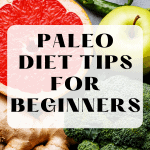
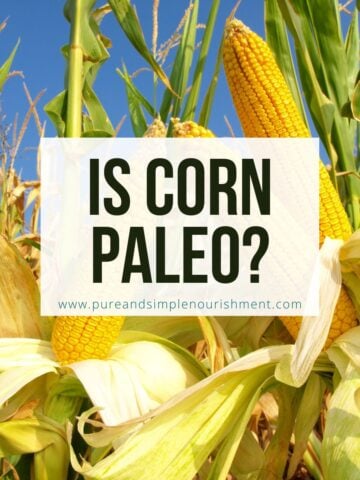
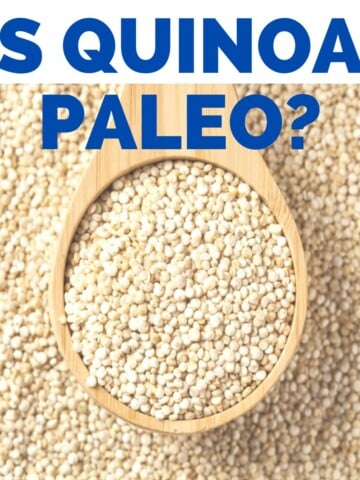

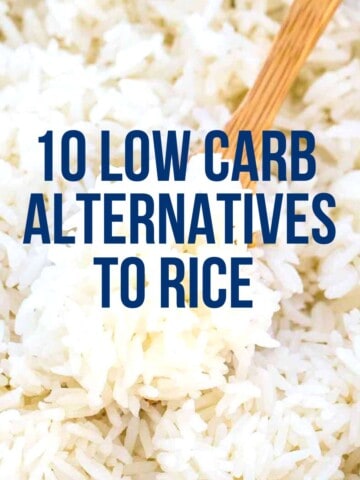
Leave a Reply